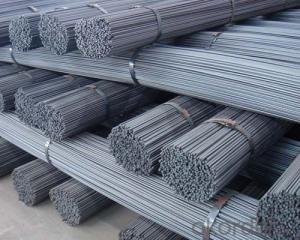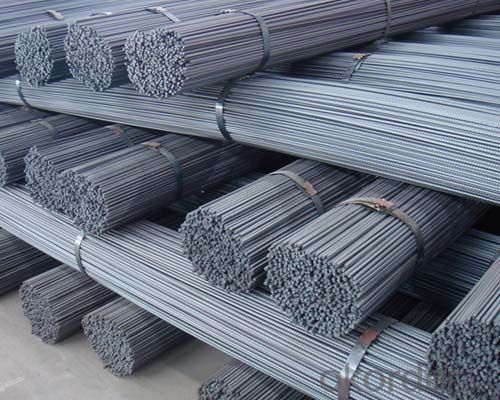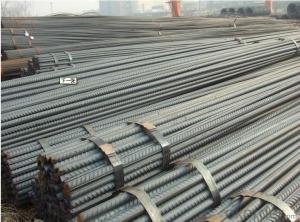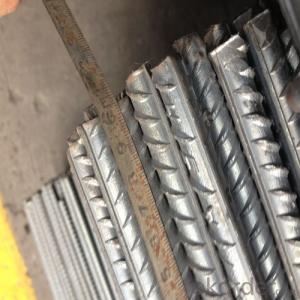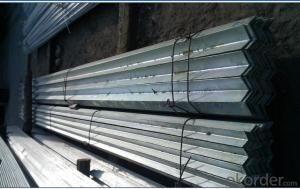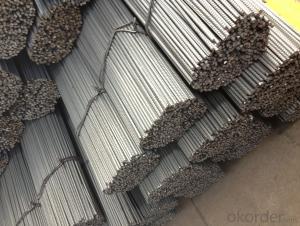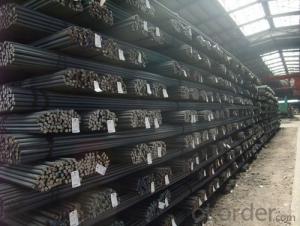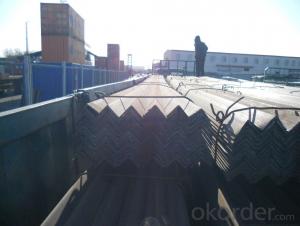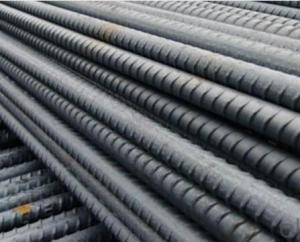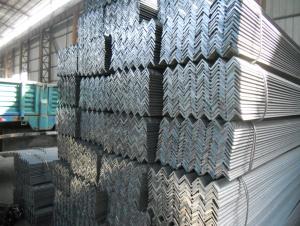Steel Ribbed Rebar In Bundles GB Standard
- Loading Port:
- China main port
- Payment Terms:
- TT OR LC
- Min Order Qty:
- 100 m.t.
- Supply Capability:
- 100000 m.t./month
OKorder Service Pledge
OKorder Financial Service
You Might Also Like
Usage and Applications
Deformed bar is widely used in buildings, bridges, roads and other engineering construction. Big to highways, railways, bridges, culverts, tunnels, public facilities such as flood control, dam, small to housing construction, beam, column, wall and the foundation of the plate, deformed bar is an integral structure material. With the development of world economy and the vigorous development of infrastructure construction, real estate, the demand for deformed bar will be larger and larger.
Diameter(mm) | Section area (mm²) | Mass(kg/m) | Weight of 12m bar(kg) |
6 | 28.27 | 0.222 | 2.664 |
8 | 50.27 | 0.395 | 4.74 |
10 | 78.54 | 0.617 | 7.404 |
12 | 113.1 | 0.888 | 10.656 |
14 | 153.9 | 1.21 | 14.52 |
16 | 201.1 | 1.58 | 18.96 |
18 | 254.5 | 2.00 | 24 |
20 | 314.2 | 2.47 | 29.64 |
22 | 380.1 | 2.98 | 35.76 |
25 | 490.9 | 3.85 | 46.2 |
28 | 615.8 | 4.83 | 57.96 |
32 | 804.2 | 6.31 | 75.72 |
36 | 1018 | 7.99 | 98.88 |
40 | 1257 | 9.87 | 118.44 |
50 | 1964 | 15.42 | 185.04 |
Packaging & Delivery
Packaging Detail: products are packed in bundle and then shipped by container or bulk vessel, deformed bar is usually naked strapping delivery, when storing, please pay attention to moisture proof. The performance of rust will produce adverse effect.
Each bundle weight: 2-3MT, or as required
Payment term: TT or L/C
Delivery Detail: within 45 days after received advanced payment or LC.
Label: to be specified by customer, generally, each bundle has 1-2 labels
Trade terms: FOB, CFR, CIF
Cold Rolled Techniques
Yield Point: 545-565mpa
Deformed bar is widely used in buildings, bridges, roads and other engineering construction. Big to highways, railways, bridges, culverts, tunnels, public facilities such as flood control, dam, small to housing construction, beam, column, wall and the foundation of the plate, deformed bar is an integral structure material. With the development of world economy and the vigorous development of infrastructure construction, real estate, the demand for deformed bar will be larger and larger.
- Q: Can steel rebars be used in pre-tensioned or post-tensioned structures?
- Yes, steel rebars can be used in both pre-tensioned and post-tensioned structures. In pre-tensioned structures, the rebars are tensioned before the concrete is poured, creating a compressive force in the concrete. In post-tensioned structures, the rebars are tensioned after the concrete has hardened, allowing for greater flexibility in design and reducing cracking.
- Q: What is the impact of steel rebars on the aesthetics of a structure?
- Steel rebars, being an essential component of reinforced concrete structures, generally have minimal impact on the aesthetics of a building. They are typically concealed within the structure and remain hidden from view. However, in certain architectural designs where rebars are intentionally exposed, they can contribute to an industrial or modern aesthetic. Overall, the impact of steel rebars on the aesthetics of a structure is largely dependent on the design intent and whether they are meant to be visible or not.
- Q: How do steel rebars affect the thermal conductivity of concrete structures?
- Steel rebars have a significant impact on the thermal conductivity of concrete structures. The inclusion of steel rebars in concrete increases the overall thermal conductivity of the structure. This is because steel has a much higher thermal conductivity than concrete. Consequently, heat transfer through the concrete is facilitated by the presence of steel rebars, leading to a higher overall thermal conductivity of the structure.
- Q: What is the recommended spacing between inclined steel rebars in slabs?
- The recommended spacing between inclined steel rebars in slabs typically ranges between 3 to 4 times the slab thickness.
- Q: What are the different types of steel rebars used in dam constructions?
- In dam constructions, different types of steel rebars are utilized, each possessing specific properties and applications. The commonly employed variants consist of: 1. Mild Steel Rebars, which are manufactured using low carbon steel. Due to their affordability and availability, they find extensive use in dam constructions. Although they exhibit good tensile strength, their resistance to corrosion is relatively low. 2. High Strength Deformed (HSD) Steel Rebars, on the other hand, are crafted from carbon steel and incorporate additional alloys like vanadium or manganese. These rebars offer heightened tensile strength and superior corrosion resistance when compared to their mild steel counterparts. They are typically employed in critical areas of the dam structure that demand enhanced strength. 3. Epoxy-Coated Rebars, as the name suggests, involve the application of an epoxy coating to enhance their resistance to corrosion. This protective layer acts as a barrier against moisture and chemicals, thereby minimizing the risk of corrosion. Epoxy-coated rebars are frequently employed in dam constructions that anticipate exposure to harsh environmental conditions. 4. Stainless Steel Rebars are characterized by their remarkable resistance to corrosion and are typically used in dam constructions that involve aggressive environments such as saltwater or chemical-laden water. Although they are more expensive than other types of rebars, they offer unparalleled durability. 5. Galvanized Rebars, which are coated with a layer of zinc, exhibit excellent corrosion resistance. They are commonly employed in dam constructions where the structure will encounter water or moisture for extended periods. The selection of the most suitable type of steel rebar for dam construction is contingent upon various factors, including the specific project requirements, anticipated environmental conditions, and budgetary constraints. An engineering team will meticulously assess these factors in order to determine the optimal type of steel rebar that ensures the longevity and structural integrity of the dam.
- Q: Can steel rebars be used in other construction materials apart from concrete?
- Yes, steel rebars can be used in other construction materials apart from concrete. They can also be utilized in masonry structures, timber frames, and even in composite materials. The high strength and durability of steel rebars make them suitable for reinforcing various construction materials, enhancing their structural integrity and load-bearing capacity.
- Q: What is the lifespan of steel rebars in concrete structures?
- The lifespan of steel rebars in concrete structures can vary due to a range of factors. Generally, steel rebars are designed to provide concrete structures with durability and strength. Through proper design, construction, and maintenance, steel rebars can endure for many decades or even up to a century within concrete structures. One crucial factor that affects the lifespan of steel rebars is the quality of materials utilized. Rebars of high quality, which have corrosion-resistant coatings or are made of stainless steel, tend to last longer compared to regular carbon steel rebars. Moreover, the quality of the concrete used and its ability to shield the rebars from moisture and corrosive agents is also significant. Environmental conditions play a significant role in determining the lifespan of steel rebars. Exposure to harsh climates, such as regions with high humidity, saltwater, or acidic environments, can expedite corrosion and reduce the lifespan of the rebars. Adequate protective measures, such as maintaining the proper thickness of concrete cover, implementing waterproofing techniques, and utilizing corrosion inhibitors, can help extend the lifespan of steel rebars in such conditions. Maintenance and inspection are essential to ensure the longevity of steel rebars in concrete structures. Regular inspections should be conducted to detect signs of corrosion, cracking, or damage, and any necessary repairs or protective measures should be promptly undertaken. In certain cases, periodic coating or replacement of rebars may be necessary to uphold the structural integrity of the concrete elements. In conclusion, the lifespan of steel rebars in concrete structures can range from several decades to over a century, depending on various factors including material quality, environmental conditions, and proper maintenance. By implementing appropriate design, construction, and maintenance practices, the lifespan of steel rebars can be significantly prolonged, guaranteeing the long-term integrity and durability of the concrete structure.
- Q: What is the role of steel rebars in preventing structural failures?
- The role of steel rebars in preventing structural failures is crucial and integral in the construction industry. Steel rebars, also known as reinforcing bars, are used to reinforce and strengthen concrete structures, ensuring their durability and ability to withstand various forces. One of the primary functions of steel rebars is to enhance the tensile strength of concrete. While concrete is an excellent material for compression, it is relatively weak in tension. The introduction of steel rebars into concrete structures helps to counter this weakness by providing resistance to tensile forces. Steel rebars act as a reinforcement, absorbing and distributing tensile stresses throughout the structure, preventing cracks and fractures from developing and ultimately preventing structural failures. Additionally, steel rebars play a crucial role in preventing structural failures by improving the overall structural stability. By reinforcing concrete, rebars enhance the structural integrity and increase the load-bearing capacity of the structure. This allows the structure to withstand heavier loads and forces, such as those caused by natural disasters, extreme weather conditions, or human activities. Steel rebars are also essential in preventing structural failures caused by corrosion. Concrete structures are exposed to various environmental factors that can lead to corrosion of the reinforcing steel, such as moisture, chemicals, and salts. As steel rebars are typically coated or protected with anti-corrosive materials, they provide a barrier against corrosion, ensuring the long-term durability and integrity of the structure. Furthermore, steel rebars aid in preventing structural failures by providing stability during construction. During the construction process, steel rebars are strategically placed within the concrete forms to provide reinforcement at critical points and areas prone to high stress. This ensures that the structure is stable and can withstand the loads and forces imposed during and after construction. In summary, the role of steel rebars in preventing structural failures is multi-faceted. They enhance the tensile strength of concrete, increase structural stability, prevent corrosion, and provide stability during construction. By reinforcing the concrete, steel rebars significantly contribute to the overall strength, durability, and safety of structures, ultimately preventing structural failures and ensuring the longevity of the built environment.
- Q: What are the different sizes of steel rebars available in the market?
- The different sizes of steel rebars available in the market vary depending on the specific requirements of construction projects. Common sizes range from #3 (10mm) to #18 (57mm) in diameter, with various lengths available as well. These sizes are standardized and widely used in the industry to ensure structural integrity and compatibility with reinforced concrete applications.
- Q: What are the guidelines for the proper anchoring of steel rebars in walls?
- The guidelines for proper anchoring of steel rebars in walls typically involve factors such as the rebar size, spacing, embedment depth, and the type of wall construction. It is important to follow building codes and structural engineering standards specific to your region. Generally, rebars should be adequately spaced and securely anchored into the surrounding concrete or masonry to ensure proper load transfer and structural integrity. Additionally, proper cover thickness should be maintained to protect rebars from corrosion and ensure long-term durability.
Send your message to us
Steel Ribbed Rebar In Bundles GB Standard
- Loading Port:
- China main port
- Payment Terms:
- TT OR LC
- Min Order Qty:
- 100 m.t.
- Supply Capability:
- 100000 m.t./month
OKorder Service Pledge
OKorder Financial Service
Similar products
Hot products
Hot Searches
Related keywords
